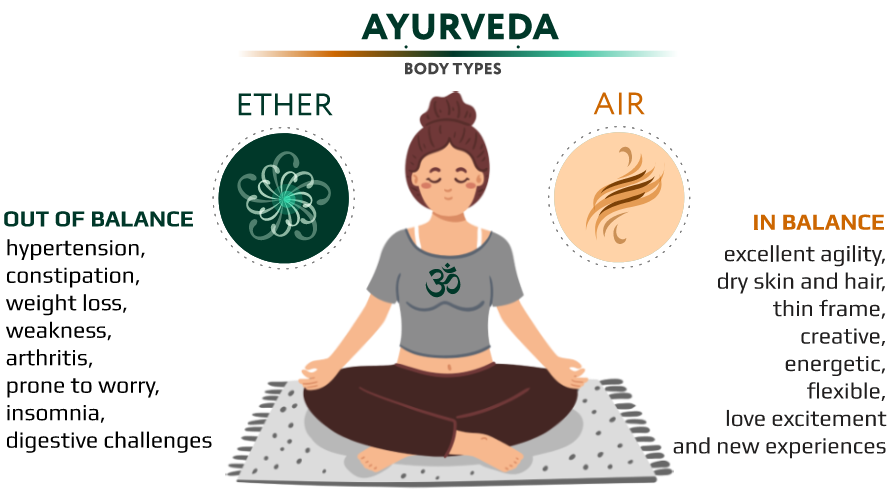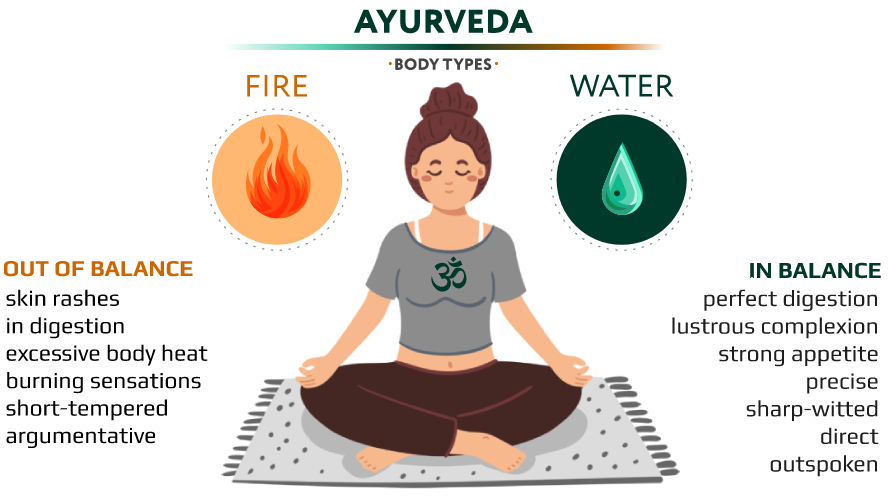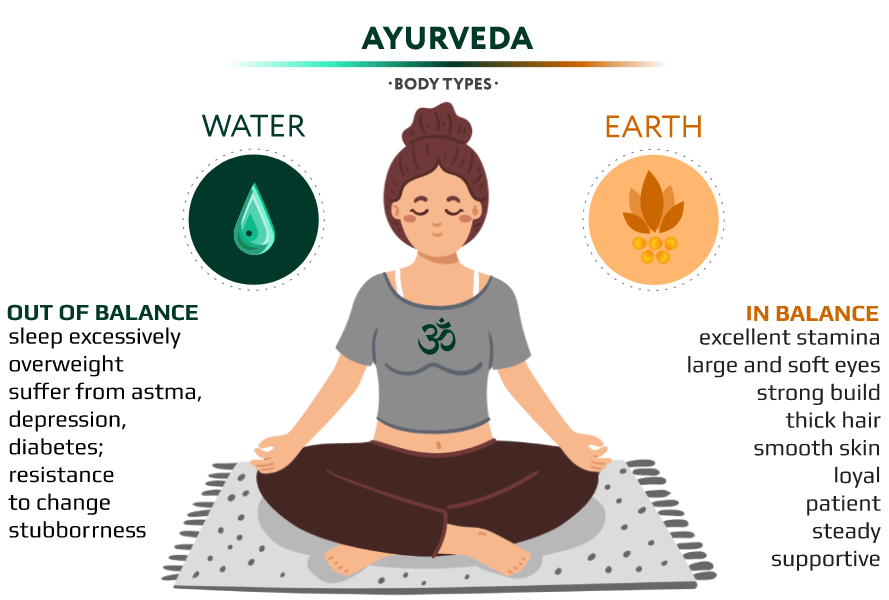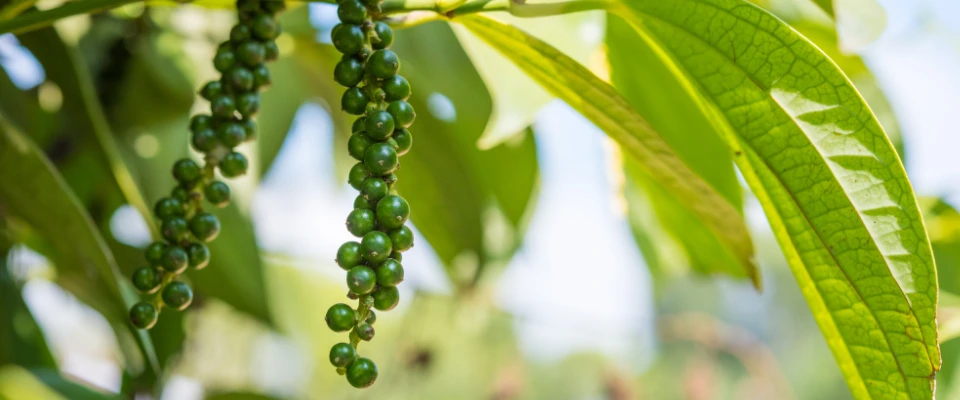Indian Ayurveda Herbs & Spices: Functional Foods & Nutraceuticals

Your Single-Stop Source for all things based in Ayurveda and Wellness.
Are you tired of conflicting incomplete information on Ayurveda?
We were too.
We decided to create our own knowledge base and home
for
All things Ayurvedic and Wellness!
Understanding Ayurveda and Doshas
Ayurveda

The word Ayurveda comes from two Sanskrit words “Ayur” meaning “life” & “Veda” meaning “science” or knowledge. Ayurveda is ancient Indian “Knowledge of Life” and is considered to be as old as 5000 years. It is oldest holistic Medicine Systems.
Ayurveda promotes a holistic way of life with balance and wellness of mind, body, and spirit. In the United States, it is regarded as a form of complementary and alternative medicine (CAM).
Ayurveda is based on the concept that the world and we as part of this world as made up of 5 elements of life, namely Space (Aakash), Air (Vayu), Fire (Teja), Water (Jala), and Earth (Prithvi). And the unique combination of these elements makes up three body constitutions or prakruti: Vata, Pitta, Kapha (loosely translated means gas, bile, and phlegm, respectively).
According to Ayurveda, these doshas influence the regeneration, maintenance, and breakdown of body tissue as well as psychological factors like emotions, understanding, and love.
When the doshas are balanced, they regulate the body’s systems and homeostasis, but even if one dosha out of balance, which mainly happens due to a particular type of lifestyle and diet practices, it can cause an imbalance. This imbalance leads to various discomforts and ailments in the body. In other words, any kind of chronic ailments are a result of imbalanced dosh and the entire Ayurvedic medical treatment is based on balancing these doshas.
Ayurveda helps in regaining the equilibrium of these doshas and subsequently the specific aspects of life that have been out of balance.
The theory of “Three -Doshas” is that our body comprises a ratio of each dosha, but one of them frequently dominates, making it the dominant dosha or dosha type, which plays a significant role in the functioning of our body.
The fluctuation in these doshas can be caused due to seasonal changes, time of day, the process of digestion, and several other factors which can lead to various ailments in our body.
Every human being is predisposed to a particular Dosha either Vata, Pitta, or Kapha at the time of conception, and it becomes one’s unique Prakriti (constitution).
Three types of Doshas

The Vata, Pitta, and Kapha dosha is considered biological energy that resides throughout the human mind and body and helps function.
Each dosha is characterized by a set of physical, emotional, and mental traits. Here are some common ones.
Vata

In the human body, Vata is responsible for the energy of movement. It regulates breathing, blinking, muscle movement, heartbeat, and all movement-related body functions including circulation, respiration, and the neurological system.
Balanced Vata, encourages creativity and adaptability, but when it goes out of balance, it triggers stress and anxiety.
The Fall season is associated with Vata because of its cold, clear days.
Pitta
Pitta influences digestive “Agni” or fire of the body and is responsible for energy, metabolism, and transformation. It regulates the digestion system.
Summer is associated with Pitta.

People with dominant Pitta, have a powerful digestive system and a strong appetite. If they do not eat, they will become irritable and grumpy. They are prone to health problems such as inflammation, rashes, acne, and irritable bowels.
Those with a Pitta dosha should prioritize work-life balance and avoid intense heat (hot weather or spicy food). Pitta dominant person must recognize and manage their forceful inclinations, diverting them in more productive ways to find a balance.
Kapha

People with the Kapha constitution work in a systematic and detailed manner. They can appear slow and sluggish at times but have extraordinary endurance and strength.
When Kapha-dominated people set goals, they follow them with patience and determination.
Spring season is associated with Kapha
Balance Your Doshas
Tips to Balance Vata Dosha

- Intake warm, moist, fresh, and well-prepared dishes.
- Practice meditation regularly.
- Consume food with sweet, sour, and salty flavors.
- Massage with sesame oil or almond oil.
- Create a regular daily schedule and a proper sleeping routine.
- Avoid cold and dry weather, excessive travel.
- Cut down your screen time.
- At bedtime, drink warm milk with cardamom.
- Engage in activities such as walking, cycling, running, yoga.
Tips to Balance Pitta Dosha

- Choose wholesome foods; avoid packaged food.
- Avoid alcohol and acidic foods.
- Choose sweet, bitter, and sour flavors in your diet.
- Include moderate, mild exercise on a regular basis.
- Incorporate meditation, walks in nature, self-care into your daily routine.
- Include spices like fennel, coriander, cardamom, and turmeric in your diet
- Use ghee, Coconut oil, and olive oil in cooking.
- Avoid going out in the afternoon when sunlight is extreme.
Tips to Balance Kapha Dosha

- The ideal meal should include light, warm, and evenly cooked dishes.
- Consume food with spicy, bitter, and savory flavors.
- Switch to new routines.
- Get up early in the morning, preferably before sunrise.
- Avoid naps throughout the day.
- Eat lighter meals, with your main meal at midday.
- Exercise on a regular and intensive basis.
- Include fresh ginger in the diet.
- Avoid alcohol, caffeinated beverages, chocolate.
- Try liquid fasting once a week.
An imbalanced dosha can lead to health problems and disease. So, choosing the right foods, exercises, and lifestyle habits depending on your dosha prakruti, promotes optimal physical and mental health balance.
Ayurveda does not replace professional medical care. It supports it. Consult your primary care physician for any health concerns.






